Men clad in silver bunker gear mingled with others garbed in dark grey suits adjusting facemask and oxygen tanks. The shrill of a fire alarm sounded as nine firefighters formed into three lines of alternate gray and silver outside the doorway of a smoke-filled building.
Baghdad International Airport Fire Chief Raad Mohammed Seeid gave last minute directions to the team of BIAP civilian firefighters and Iraqi Air Force firefighters as they rushed in low beneath thick black clouds.
The primary objective of this training was to get the two fire departments, a mere mile apart, working together.
"As we drawdown here, it's important to have each fire chief and assistant fire chief get together and learn how each department works so in an actual emergency they know what to expect from each other," said U.S. Air Force 447th Expeditionary Civil Engineering Squadron Assistant Fire Chief Marty Smith.
The two three-man teams each carried a hose running from a red Mercedes fire engine, while a third team waited outside from an over watch position with a safety line.
Firefighters from 447th ECES watched and gave instruction from inside the burn building, as the Iraqi firefighters negotiated cluttered doorways and burning mattresses.
"When we train, we train for the hardest scenario," Tech Sgt. Spencer Sweeney, an instructor from 447th ECES, said. "So today we used the mattresses which give off a thick smoke and burn hot to limit visibility. We also have littered the floor with plywood and pallets to create obstacles for them."
As the firefighters emerged from the building Air Force Maj. Gen. James P. Hunt, Multi-National Corp-Iraq deputy commanding general, was on hand observing the training exercise and congratulated the firefighters on their success.
The 447th firefighters condensed a 40-hour course into two days of classroom instruction for Iraqi firefighters with the aid of a 364th Civil Affairs Brigade bilingual, bicultural advisor.
The class covered firefighting techniques specific to airports, aircraft familiarization, and the incident management system.
Sweeney said it is common practice stateside for the Air Force firefighters to work with local fire departments. They train in mixed teams in the event there's a fire neither department can handle independently.
"Our firefighters are experienced, but working with new firefighters from the Iraqi Air Force brings additional experience and ways of doing things," Seeid said. "I expect success in the future because we have already learned from our mistakes."
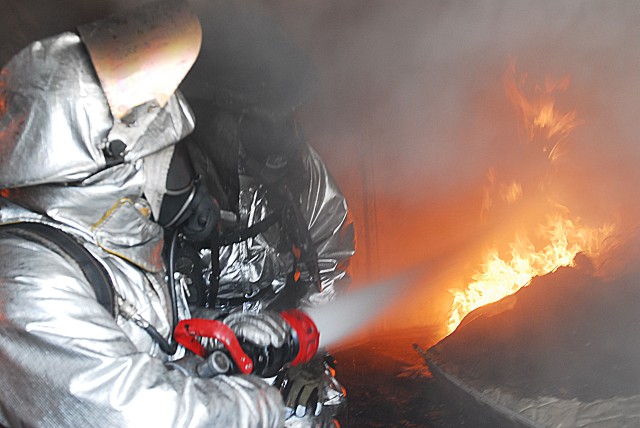
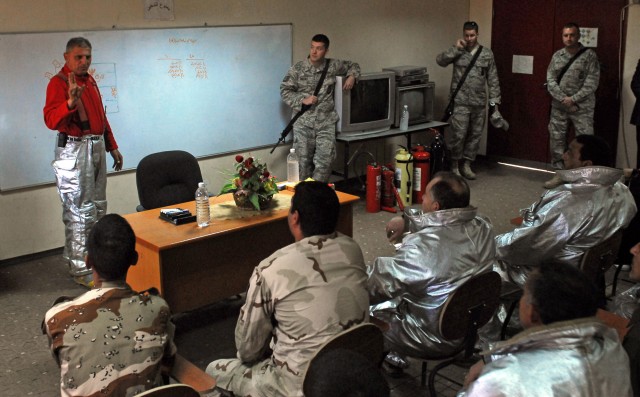
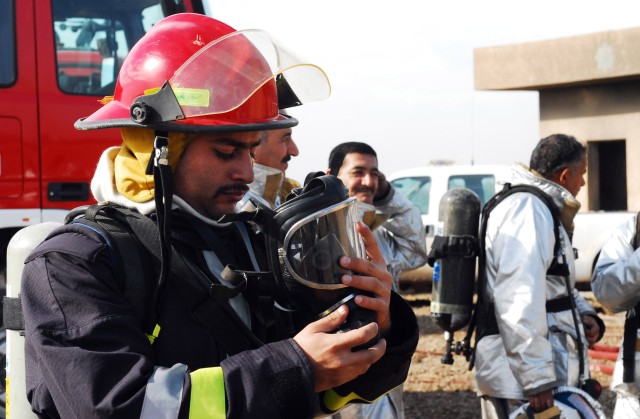
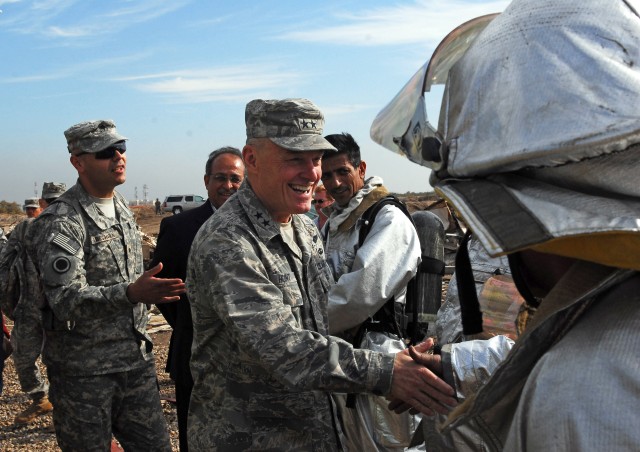
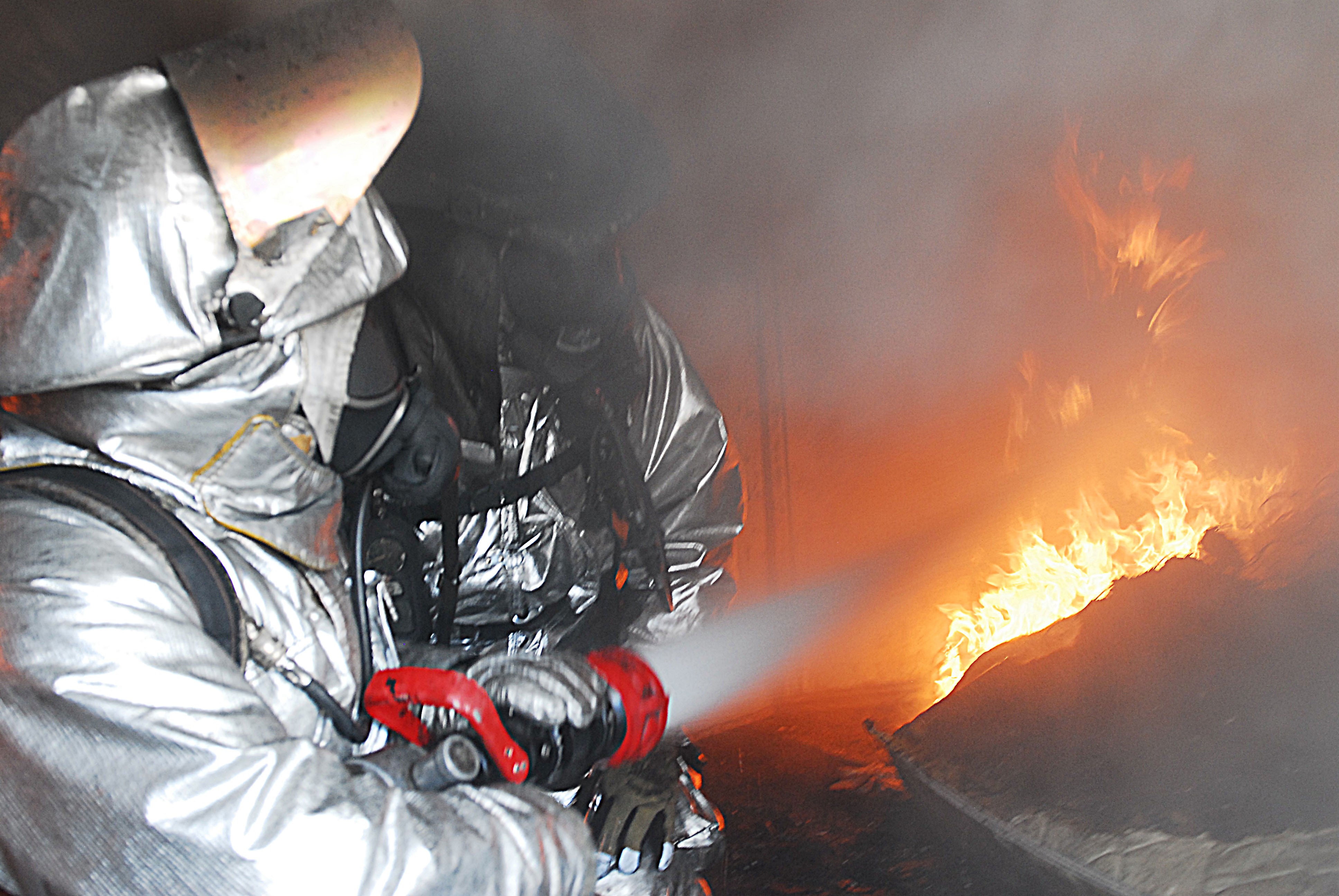

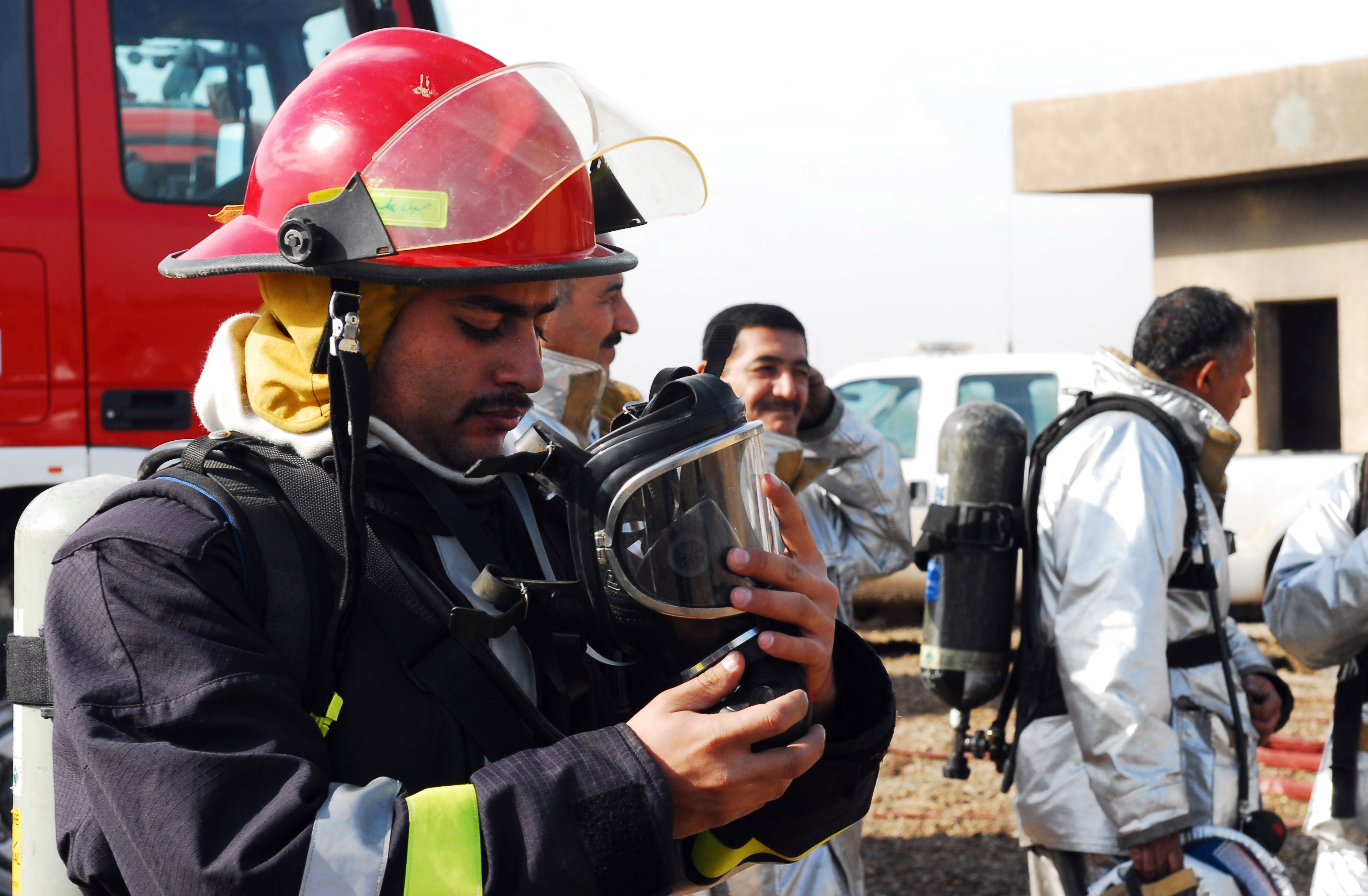
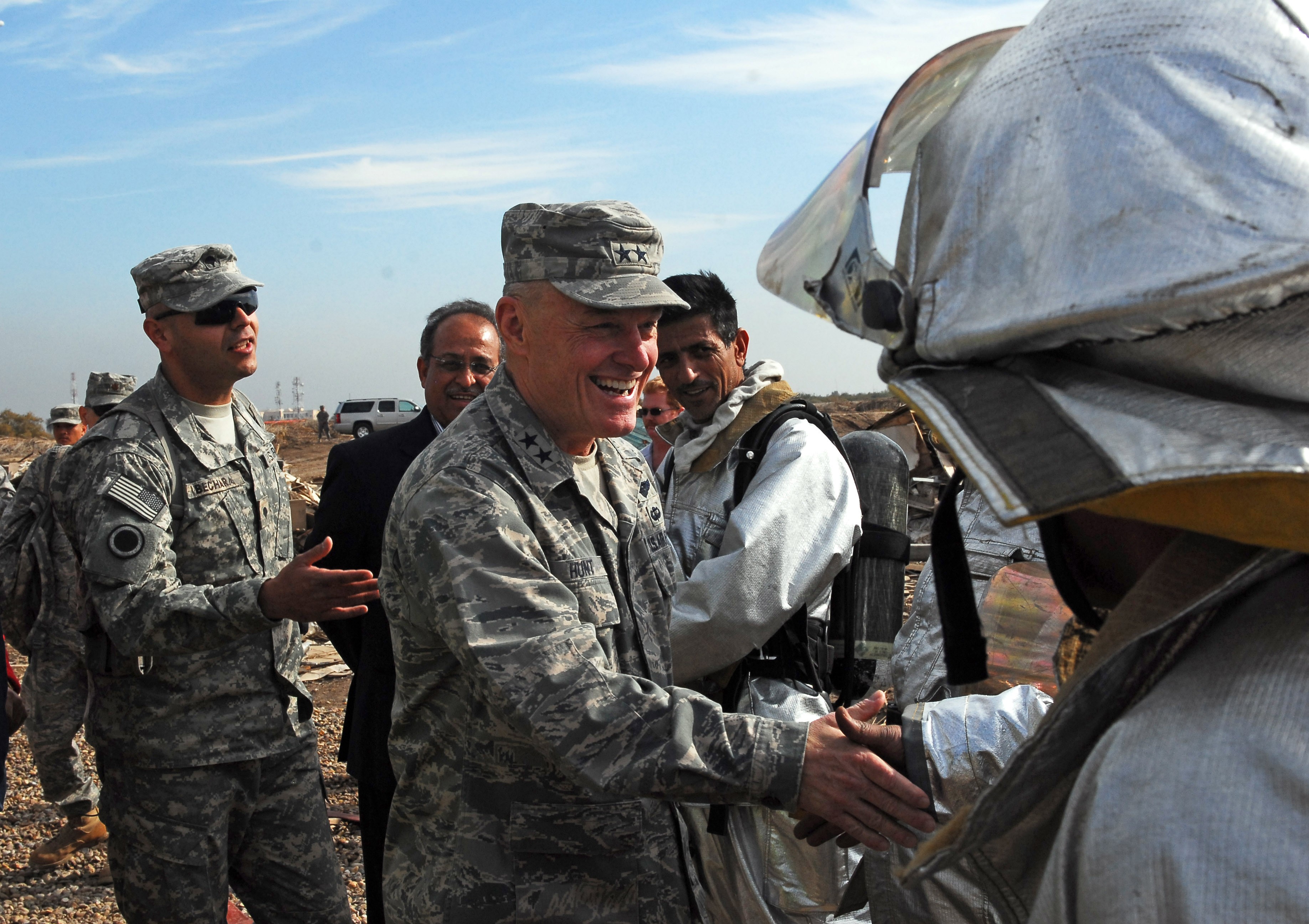
Social Sharing